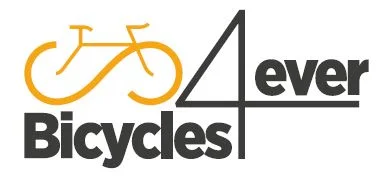Illegal Super Bike | So Fast It Was Banned! with GCN
Source: GCN Youtube Channel: Illegal Super Bike | So Fast It Was Banned!
Video Illegal Super Bike | So Fast It Was Banned! with Global Cycling Network
Video Illegal Super Bike | So Fast It Was Banned! with Global Cycling Network YouTube Channel.
Illegal Super Bike | So Fast It Was Banned!
In the world of cycling, there are iconic bikes that have left a lasting imprint on the sport. One such bike is the Lotus 108, a carbon fiber Superbike that gained fame for its Olympic conquering capabilities. However, there is another bike brand that history has largely forgotten, yet is equally revolutionary – the Hotta. With Tour de France prologue victories and Olympic medals to its name, the Hotta is a bike that deserves recognition for its groundbreaking design and performance.
The Hotta was originally devised in 1992, with a carbon monocoque frame design that was ahead of its time. The production model, released in 1993, featured dual stays on the rear and a carbon bladed fork for added aerodynamics. Designed by Simon Ask, a keen cyclist working for a composites company called Carbon in Infinity, the Hotta was a blend of innovative materials and cutting-edge design.
The Hotta quickly gained popularity in the racing scene, racking up wins on the domestic National time trial circuit in the UK. Legendary cyclists like Gary M and Chris Boardman also embraced the Hotta, using its lightweight frame to their advantage. In fact, Chris Boardman even used the Hotta fork on his ultimate hour record Lotus 108, showcasing the bike’s versatility and performance capabilities.
However, the glory days of the Hotta came to an abrupt end with the UCI’s ban on aerodynamic designs in professional racing. This ban relegated the Hotta to engineering labs and the history books, leaving behind a legacy of innovation and speed that remains untarnished.
The GCN team set out to test the performance of the Hotta against a modern-day super bike – the O’s alerson deink Team edition Canyon Air Road CFR. The contrast between the two bikes is stark, with the Hotta’s retro design and aerodynamics facing off against the modern technology and aerodynamics of the Canyon.
Riding the Hotta on the challenging roads of Devon, the GCN team faced the flexiness of the front wheel and forks, as well as the aggressive geometry that demanded precise handling. Despite the old-school feel of the Hotta, its legacy shone through as a bike that was once a force to be reckoned with on the race circuit.
Switching to the Canyon Air Road CFR, the GCN team experienced a completely different riding experience. The modern design, stiff frame, and aerodynamic features of the Canyon offered a stark contrast to the Hotta, showcasing the evolution of bike technology over the years.
In a head-to-head time trial test, the GCN team compared the performance of the Hotta against the Canyon. While the Canyon emerged as the overall faster bike, the Hotta held its own, proving that its design and performance capabilities still have relevance even after 30 years.
In the end, the GCN team concluded that while the modern technology of the Canyon offers enhanced performance, the Hotta’s legacy as a pioneering bike remains intact. With its groundbreaking design and historical significance, the Hotta remains a testament to the innovation and ingenuity of the cycling world.
In conclusion, the Hotta may have been overshadowed by other iconic bikes, but its place in cycling history is undeniable. As a bike that pushed the boundaries of design and performance, the Hotta deserves to be remembered for its contributions to the sport. Whether racing against modern super bikes or taking a nostalgic ride down memory lane, the Hotta continues to captivate cyclists with its timeless appeal and revolutionary spirit.
The opinions expressed in this space are the sole responsibility of the YouTube Channel Global Cycling Network and do not necessarily represent the views of Bicycles4ever Cycling Culture.

